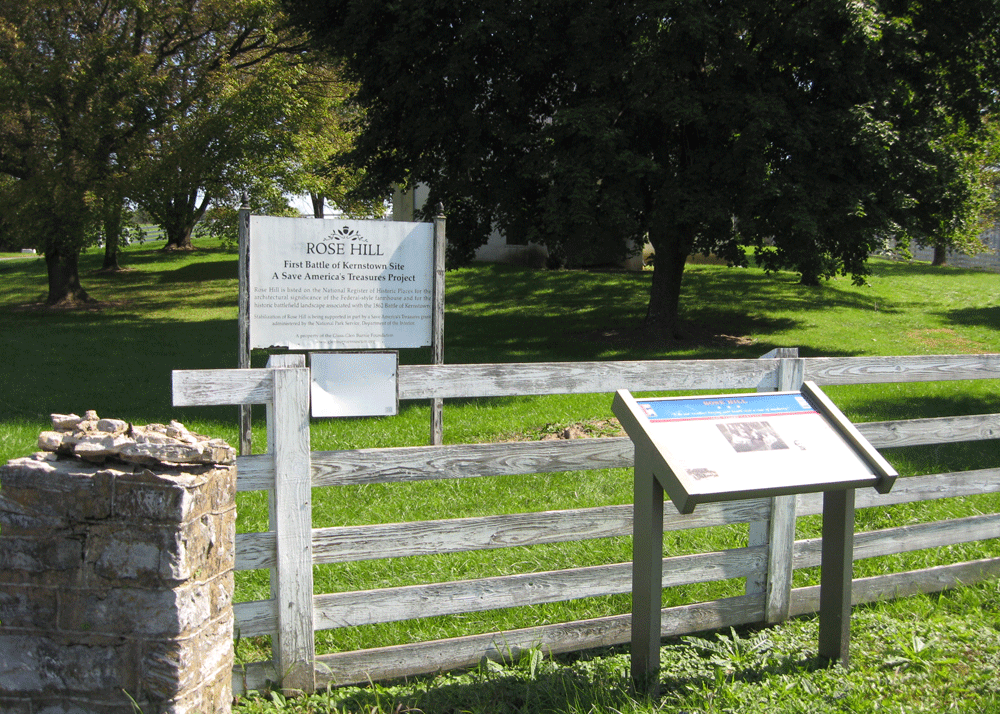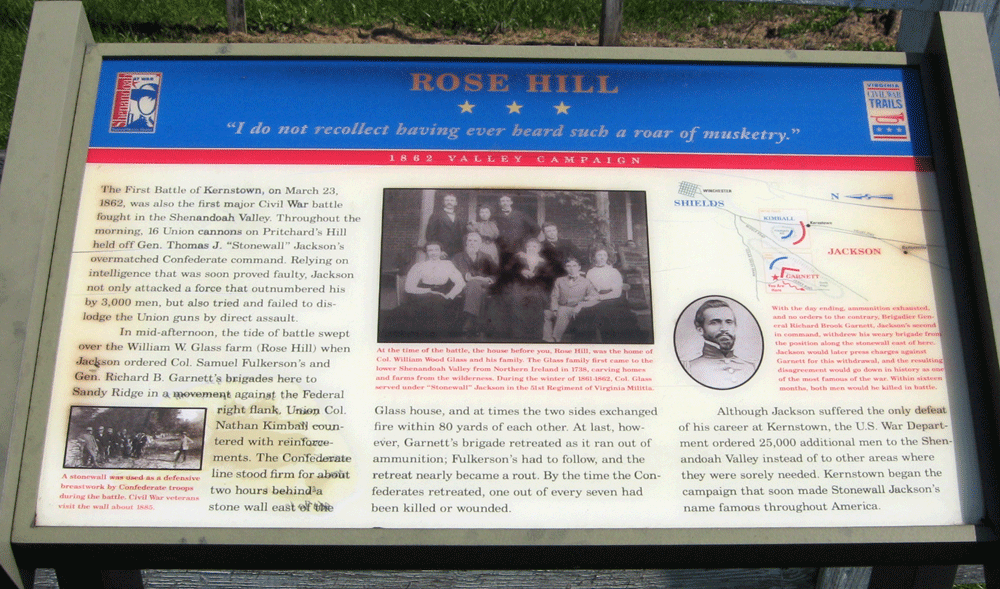Winchester > First Battle of Kernstown > Rose Hill
The Rose Hill wayside marker is at the entrance to the Rose Hill section of the First Kernstown battlefield southwest of Winchester, Virginia. Rose Hill is administered by the Museum of the Shenandoah Valley. Although the Rose Hill wayside marker is available at all times on public land, the walking tour of the Rose Farm is only open at limited times. Check with the Museum’s website for availability.

From the marker:
Rose Hill
“I do not recollect having ever heard such a roar of musketry.”
— 1862 Valley Campaign —
The First Battle of Kernstown, on March 23, 1862, was also the first major Civil War battle fought in the Shenandoah Valley. Throughout the morning, 16 Union cannons on Pritchard’s Hill held off Gen. Thomas J. “Stonewall” Jackson’s overmatched Confederate command. Relying on intelligence that was soon proved faulty, Jackson not only attacked a force that outnumbered his by 3,000 men, but also tried and failed to dislodge the Union guns by direct assault.
In mid-afternoon, the tide of battle swept over the William W. Glass farm (Rose Hill) when Jackson ordered Col. Samuel Fulkerson’s and Gen. Richard B. Garnett’s brigades here to Sandy Ridge in a movement against the Federal right flank. Union Col. Nathan Kimball countered with reinforcements. The Confederate line stood firm for about two hours behind a stone wall east of the Glass house, and at times the two sides exchanged fire within 80 yards of each other. At last, however, Garnett’s brigade retreated as it ran out of ammunition; Fulkerson’s had to follow, and the retreat nearly became a route. By the time the Confederates retreated, one out of every seven had been killed or wounded.
Although Jackson suffered the only defeat of his career at Kernstown, the U.S. War Department ordered 25,000 additional men to the Shenandoah Valley instead of to other areas where they were sorely needed. Kernstown began the campaign that soon made Stonewall Jackson’s name famous throughout America.
From the caption to the photo on the lower left:
A stone wall was used as a defensive breastwork by Confederate troops during the battle. Civil War veterans visit the wall about 1885.
From the caption to the photo in the center:
At the time of the battle, the house before you, Rose Hill, was the home of Col. William Wood Glass and his family. The Glass family first came to the lower Shenandoah Valley from Northern Ireland in 1738, carving homes and farms from the wilderness. During the winter of 1861–1862, Col. Glass served under ‘Stonewall’ Jackson in the 51st Regiment of Virginia Militia.
From the caption to the portrait photo on the right:
With the day ending, ammunition exhausted, and no orders to the contrary, Brigadier General Richard Brook Garnett, Jackson’s second in command, withdrew his weary brigade from the position along the stonewall east of here. Jackson would later press charges against Garnett for this withdrawal, and the resulting disagreement would go down in history as one of the most famous of the war. Within sixteen months both men would be killed in battle.

